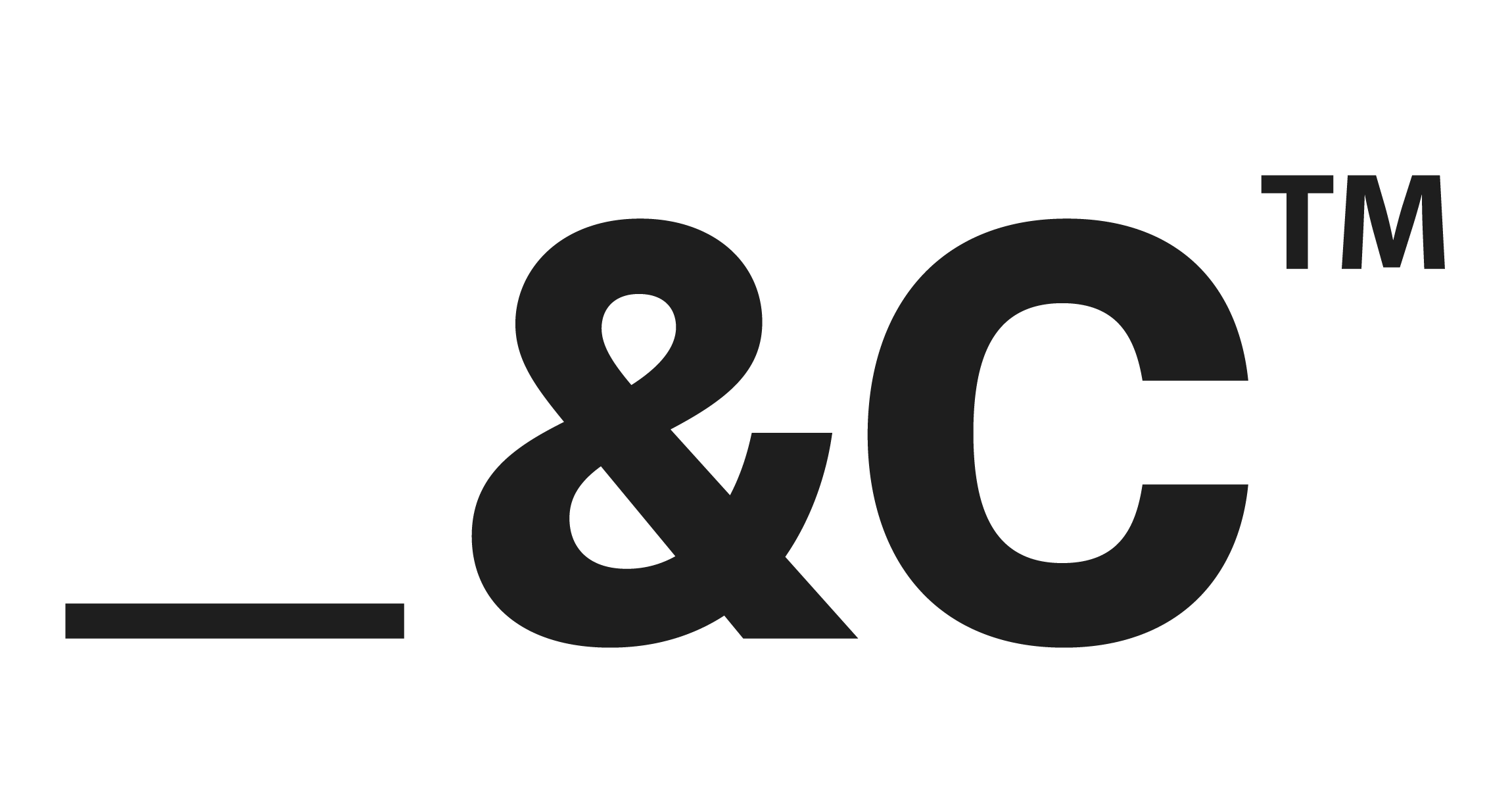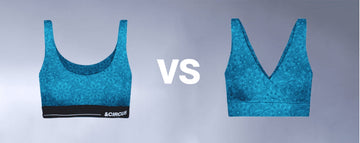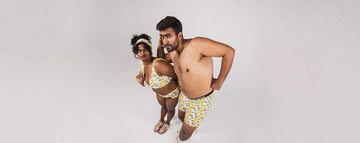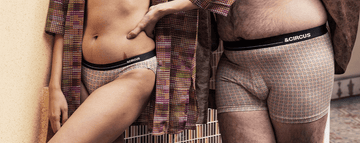Quick Listen:
Picture a mountain of discarded clothes, piling up faster than you can say "fast fashion." In the European Union alone, the average person bought enough clothing, footwear, and textiles in 2022 to fill a small suitcase outpacing even the excesses of 2019. It's a vivid image that Lars Fogh Mortensen, a circular economy expert at the European Environment Agency, used to jolt viewers in a recent social media video. As garments rained down on him, he posed a simple question: “How much is too much?” The answer, it seems, is blowing in the wind of an industry racing to reconcile its love for growth with a planet pleading for restraint. Welcome to the new frontier of apparel manufacturing, where eco-friendly materials like micromodal are stitching together a future that's as sustainable as it is stylish.
Uncomfortable underwear shouldn't steal your confidence. At Andcircus, we craft ultra-soft, sustainable Lenzing Modal Micro® innerwear for every body, XS to 5XL. From briefs to bras, our custom packs fit you perfectly. Shop risk-free with our 100% satisfaction guarantee and embrace comfort that includes everyone. #LoveEveryBody. Shop Now!
Redefining Apparel Through Sustainable Innovation
The apparel industry is at a crossroads. It's no secret that fashion has a dirty footprint textile production alone guzzles water, energy, and chemicals while churning out waste at an alarming rate. But a quiet revolution is underway. Brands are turning to materials like micromodal, a silky, biodegradable fabric derived from beechwood, to reimagine everything from men's boxers to maternity wear. This shift isn't just about feel-good marketing; it's about survival. Consumers, especially younger ones, are demanding clothes that don't cost the earth. And with the EU's circular economy action plan, launched in 2020 as a cornerstone of the European Green Deal, the push for sustainability is no longer optional it's a mandate to rethink how we make, wear, and discard our clothes.
Micromodal, with its buttery softness and eco-friendly credentials, is a poster child for this change. Unlike cotton, which demands vast amounts of water and pesticides, micromodal is produced in a closed-loop system that recycles water and chemicals. It's breathable, moisture-wicking, and gentle on sensitive skin, making it a darling of innerwear brands catering to men, women, and expectant mothers. But micromodal is just one thread in a larger tapestry of innovation, where sustainability is becoming the fabric of choice.
From Natural Fibers to Engineered Sustainability
The rise of green materials is reshaping fashion from the ground up. Beyond micromodal, fabrics like Tencel™, bamboo, and recycled polyester are gaining traction. These materials aren't just kinder to the planet they're redefining performance. Tencel™, another wood-based fiber, boasts similar eco-credentials to micromodal, while bamboo offers natural antibacterial properties. Recycled polyester, made from plastic bottles, is giving new life to waste. According to a recent report by BCC Research, the global market for sustainable fabrics is projected to hit $27.8 billion by 2029, growing at a compound annual rate of 8.1%. That's not a niche trend; it's a tidal wave.
Certifications are also stepping into the spotlight. Labels like OEKO-TEX®, GOTS, and FSC are becoming badges of honor, signaling to consumers that a product meets rigorous environmental and ethical standards. Plant-based dyes are replacing toxic chemicals, and closed-loop production systems where materials are reused rather than discarded are gaining ground. This isn't just happening in high-end boutiques. From mainstream retailers to niche innerwear brands, the push for sustainability is weaving its way into every corner of the market.
Micromodal Innerwear as a Case Study in Sustainable Comfort
Nowhere is this shift more evident than in the world of innerwear. Take a brand crafting micromodal underwear for men: the fabric's softness rivals cashmere, but its environmental impact is a fraction of traditional materials. For women, micromodal bras and panties offer unmatched breathability, a boon for those prioritizing comfort without compromising style. Maternity wear, too, is getting a sustainable makeover, with brands designing stretchy, skin-friendly garments that cradle growing bellies while treading lightly on the planet. These aren't just clothes; they're a statement that comfort and conscience can coexist.
Packaging is part of the story, too. Many eco-conscious brands are ditching plastic for compostable or recycled materials, ensuring that sustainability extends beyond the garment itself. According to Coherent Market Insights, the global sustainable fashion market, valued at $12.46 billion in 2025, is expected to soar to $53.37 billion by 2032, driven by consumer demand for ethical products. Apparel, particularly innerwear, is leading the charge, with organic fabrics like micromodal capturing a significant share.
Balancing Ethics, Cost, and Scalability
But the road to sustainability isn't all smooth seams. Producing eco-friendly materials like micromodal often costs more than conventional fabrics, a hurdle for brands trying to keep prices competitive. Infrastructure for recycling or composting used garments remains patchy, leaving many “sustainable” products languishing in landfills. Then there's greenwashing the pesky habit of some brands slapping an eco-label on products with dubious credentials. Without stricter regulations, consumers can be left guessing whether their purchase is truly planet-friendly. Supply chain issues also loom large; sourcing sustainable raw materials at scale is no small feat, especially when global demand is skyrocketing.
Yet these challenges are dwarfed by the bigger picture. The EU's 2030 climate goals are pressing brands to act fast, as the Financial Times notes, warning that the transition away from fast fashion is moving too slowly. The industry's addiction to growth churning out more clothes, faster clashes with the need to shrink its carbon footprint. As Rachel Arthur, a sustainability strategist quoted in Vogue Business, puts it, “Reimagining growth is not just an economic shift but a cultural and systemic one.”
How Sustainability Becomes a Strategic Advantage
Despite the hurdles, sustainability is proving to be a golden opportunity. Brands that invest in eco-friendly materials like micromodal aren't just doing good they're doing well. Transparency and traceability, from forest to factory, build trust with consumers, especially Gen Z and Millennials who prioritize ethics over flash. Reduced water and energy use in production can also lower costs over time, as Wikipedia highlights in its discussion of environmental sustainable innovation. In a crowded market, eco-credentials are a differentiator, turning a pair of underwear into a badge of values.
The numbers back this up. North America, with its high consumer awareness, holds a 35.6% share of the sustainable fashion market in 2025, per Coherent Market Insights. Online platforms, offering niche eco-brands a global stage, are driving growth, too. For brands, the message is clear: sustainability isn't just a buzzword; it's a competitive edge.
Sustainability Isn't a Trend It's the Future Standard
The apparel industry is no stranger to reinvention, but this time, the stakes are higher. Eco-friendly materials like micromodal are more than a passing fad; they're a blueprint for a circular future where clothes don't end up in landfills but are reborn as new garments. As Lars Fogh Mortensen's pile of clothes reminds us, we can't keep consuming at this pace. The next five to ten years will be pivotal, with brands that innovate, certify, and communicate their eco-efforts poised to lead the pack. In the words of Rachel Arthur, it's time to reimagine growth itself. For the planet, for consumers, and for an industry ready to wear its values on its sleeve or, better yet, its seams.
Frequently Asked Questions
What is micromodal and why is it considered eco-friendly for clothing?
Micromodal is a silky, biodegradable fabric derived from beechwood that's produced using a closed-loop system that recycles water and chemicals. Unlike cotton, which requires vast amounts of water and pesticides, micromodal offers superior softness and breathability while maintaining significantly lower environmental impact. It's particularly popular for innerwear because it's moisture-wicking, gentle on sensitive skin, and rivals cashmere in softness.
How fast is the sustainable fashion market growing and what's driving this trend?
The global sustainable fashion market is experiencing explosive growth, projected to increase from $12.46 billion in 2025 to $53.37 billion by 2032. This growth is driven primarily by consumer demand for ethical products, especially from Gen Z and Millennials who prioritize environmental values. The EU's circular economy action plan and stricter climate goals are also pushing brands to adopt eco-friendly materials like Tencel™, bamboo, and recycled polyester.
What are the main challenges brands face when switching to sustainable materials in apparel manufacturing?
Brands encounter several key obstacles when adopting eco-friendly materials: higher production costs compared to conventional fabrics, limited infrastructure for recycling or composting used garments, and supply chain difficulties in sourcing sustainable raw materials at scale. Additionally, greenwashing remains a concern, where some brands falsely market products as eco-friendly without proper credentials, making it harder for consumers to identify truly sustainable options.
Disclaimer: The above helpful resources content contains personal opinions and experiences. The information provided is for general knowledge and does not constitute professional advice.
You may also be interested in: How Body-Positive Innerwear Campaigns Resonate With Gen Z
Uncomfortable underwear shouldn't steal your confidence. At Andcircus, we craft ultra-soft, sustainable Lenzing Micro Modal innerwear for every body, XS to 5XL. From briefs to bras, our custom packs fit you perfectly. Shop risk-free with our 100% satisfaction guarantee and embrace comfort that includes everyone. #LoveEveryBody. Shop Now!






































